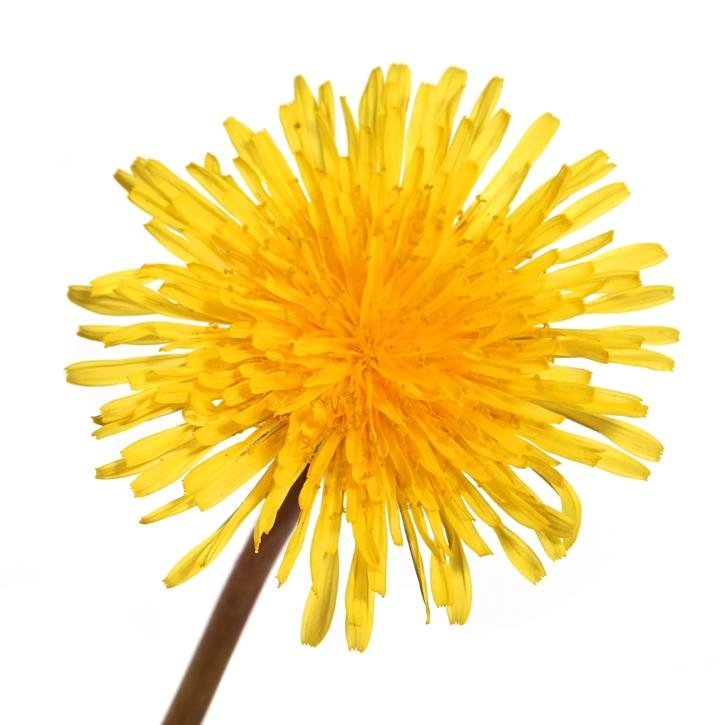Description
Herbaceous, vivacious perennial plant up to 30-50 cm long. Greyish pivoting roots and rhizomes that contain numerous laticiferous tubes in the liberian zone. The outer surface shows wrinkles arranged longitudinally. The whole plant contains white color latex. Alternate, elongated leaves (up to 40 cm) without differentiated petiole, radical, in rosette, hairless, deeply divided in uneven lobes, triangular, oblong or oblanceolate in general contour, 2-40 cm long, more or less deeply rucinate, glabrous or slightly pubescent. Straight scapes, hollow, nude, glabrous to lanate, fistulose with one only campaniform terminal capitulum; 13-21 linear to lanceolate internal bracts, 10-25 mm long, accrescent of the age of the capitulum; external bracts in greater or lesser number, shorter, more or less soon reflexed. Ligulate, oblong yellow flowers, 7-15 mm long, surrounded by reflexed bracts. Fruits consist of fusiform, achenes, tuberculate-spinulose in the upper part, 2.5-4 mm long, glabrous; fruit apex 2 to 4 times longer than the body of the achene; pappus is formed by approximately 60 white or whitish bristles, 5-8 mm long. Each capitulum may produce 200 seeds and a plant may produce over 5000. Dandelion belongs to the Asteraceae family.
It’s native, along with its many sub-species and varieties, of all the northern hemisphere and also lives in South America. It’s very common in meadows, roads and hedgebanks, throughout Spain. It grows in humid places, in pastures and uncultivated land of Europe, Asia, Africa and northern America. It blooms in early spring and autumn. It must be harvested in spring or autumn. Spring is the best time to gather the leaves (leaves cut in the morning are richer in alkaloids and essential oil than those cut at sunset). Roots must be harvested in late summer or autumn (September-November).
Part used
The whole plant (aerial part root, without inflorescence). Mainly the root is used.
Indications
- Hepatobiliary disorders: liver deficiency, hepatitis, hepatic cirrhosis, biliary dyskinesia, cholecystitis, biliary lithiasis prevention, jaundice.
- Digestive disorders: hyposecretive dyspepsia, lack of appetite, anorexia, slow digestion, satiety sensation, flatulence, constipation.
- Urinary disorders: cystitis, urethritis, uretheritis, pyelonephritis, kidney stones, edemas, water retention, oliguria.
- Arterial hypertension.
- Muscular rheumatism, hyperazotemia (urea levels rise), hyperuricemia, gout, arthrosis, arthritis.
- Skin disorders: skin irritation, dermatitis, eczemas, furuncles, herpes, acne, psoriasis.
- Depurative therapies.
- Other: Diabetes, fever, insomnia, obesity, atherosclerosis, hemorrhoids, varicose veins and phlebitis.
